Abstract
A blood culture bottle from a patient with bacteremia contained both Proteus rettgeri biogroup 5 and Providencia stuartii (described in Bergey's Manual of Determinative Bactiology [8th ed., 1974] as Proteus inconstans), which had the same unusual antibiotic resistance pattern. Single colonies of this P. rettgeri biogroup 5 isolate were shown to produce urea- clones. If current taxonomy is used, the strain changed from P. rettgeri to P. stuartii in the laboratory and probably also in the patient. Urea- clones were also found in three of six other strains of P. rettgeri biogroup 5. No urea-negative clones were found in two isolates each of P. rettgeri biogroups 1 and 3. Previous data from deoxyribonucleic acid-deoxyribonucleic acid hybridization, biochemical reactions, and serological cross-reactions all have indicated that the taxon now called P. rettgeri biogroup 5 should be classified as P. stuartii urea+. We propose that this taxonomic change be made. Urease production is probably plasmid mediated in P. stuartii urea+ and can easily be lost, as shown in our case report and in three stock cultures. Urea hydrolysis will no longer be the key test for differentiating P. rettgeri from P. stuartii. Rather, acid production from trehalose, D-arabitol, adonitol, and D-mannitol will be the key tests. Whereas P. rettgeri is usually trehalose-, D-arabitol+, adonitol+, and D-mannitol+, P. stuartii has the opposite reactions.
Full text
PDF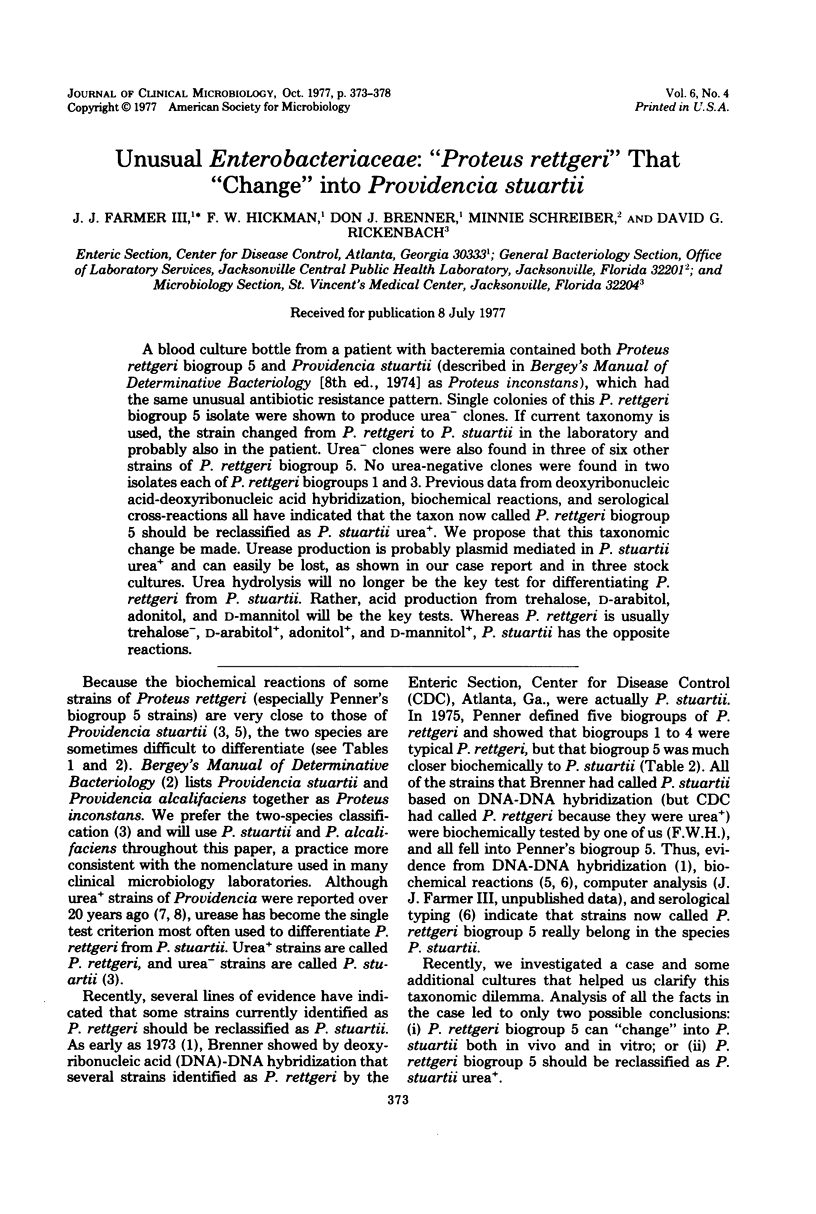
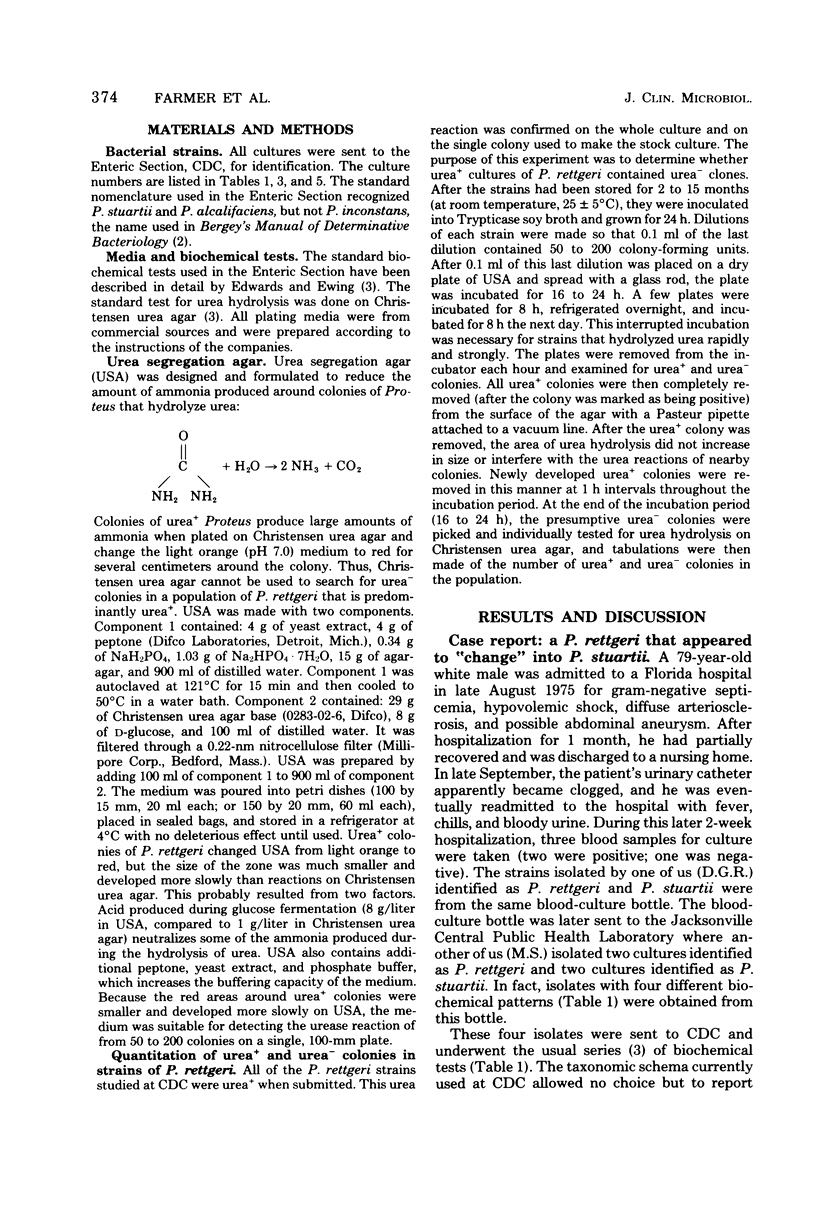
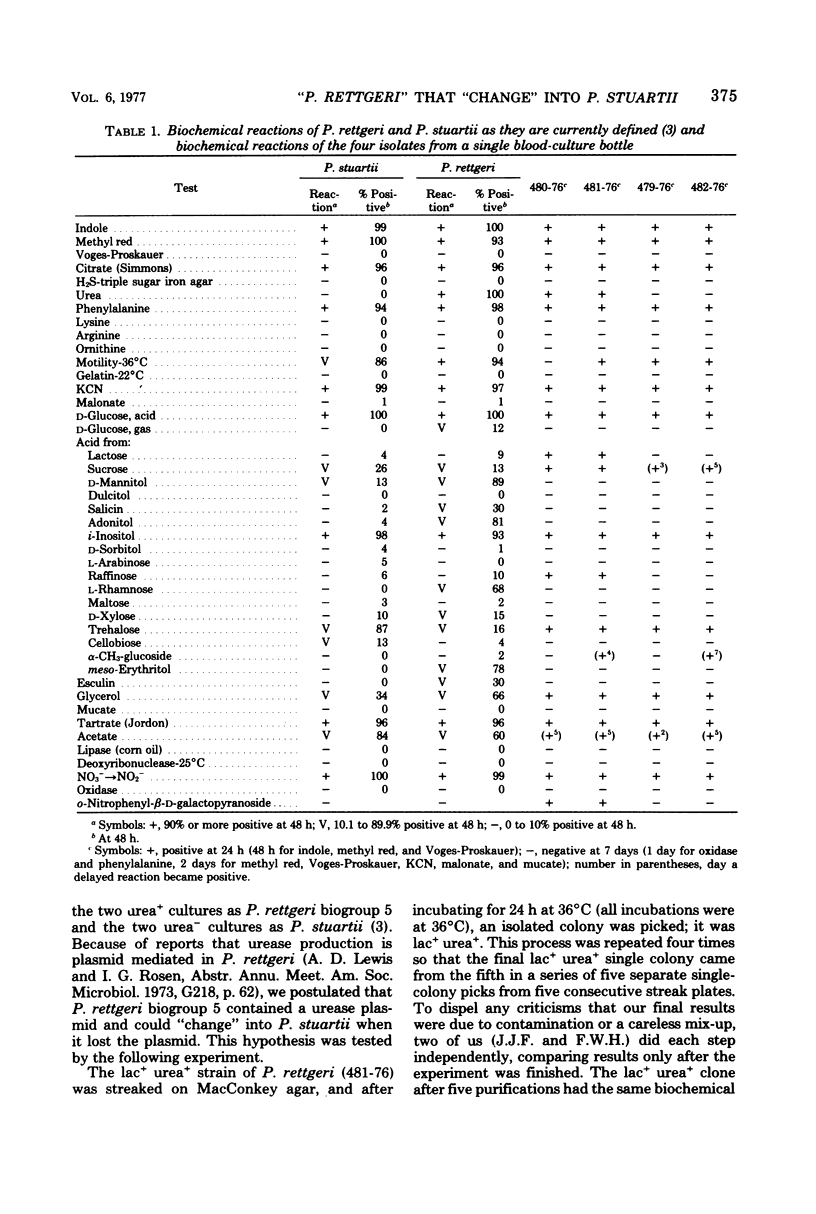
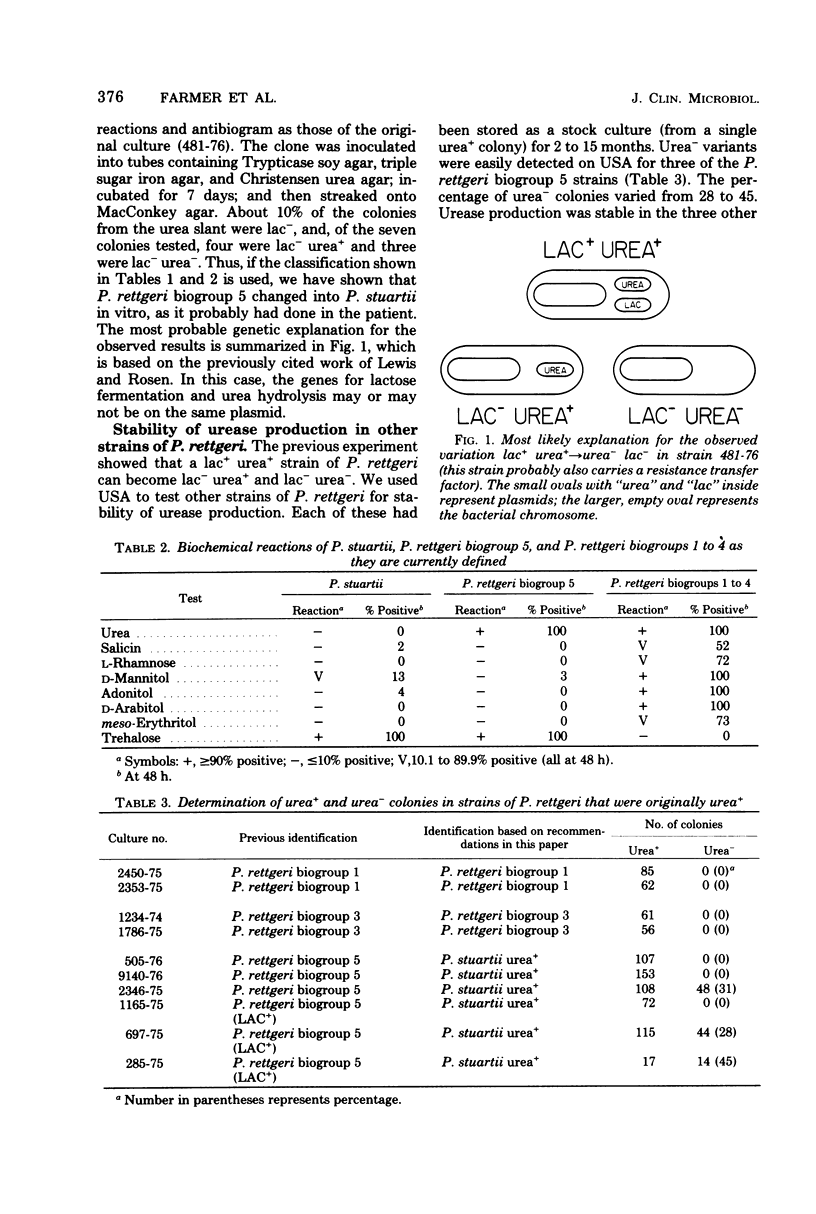
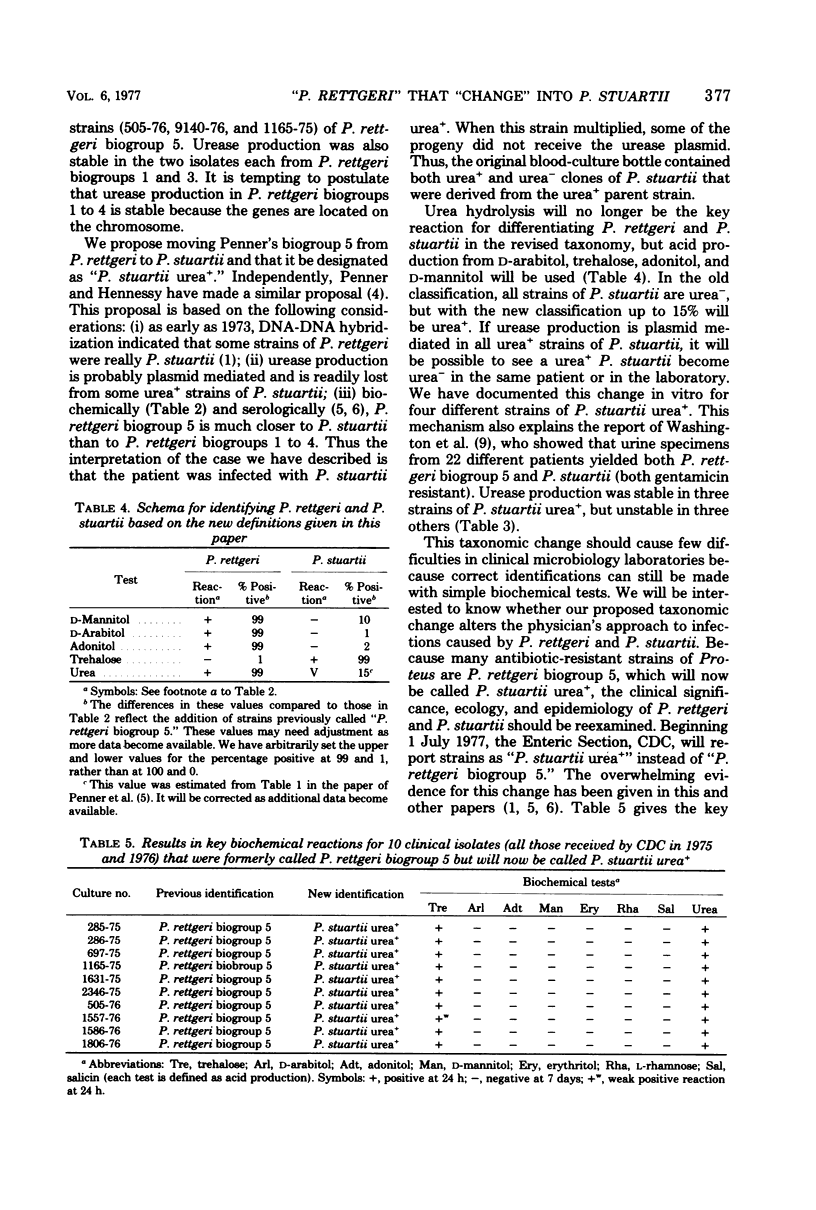
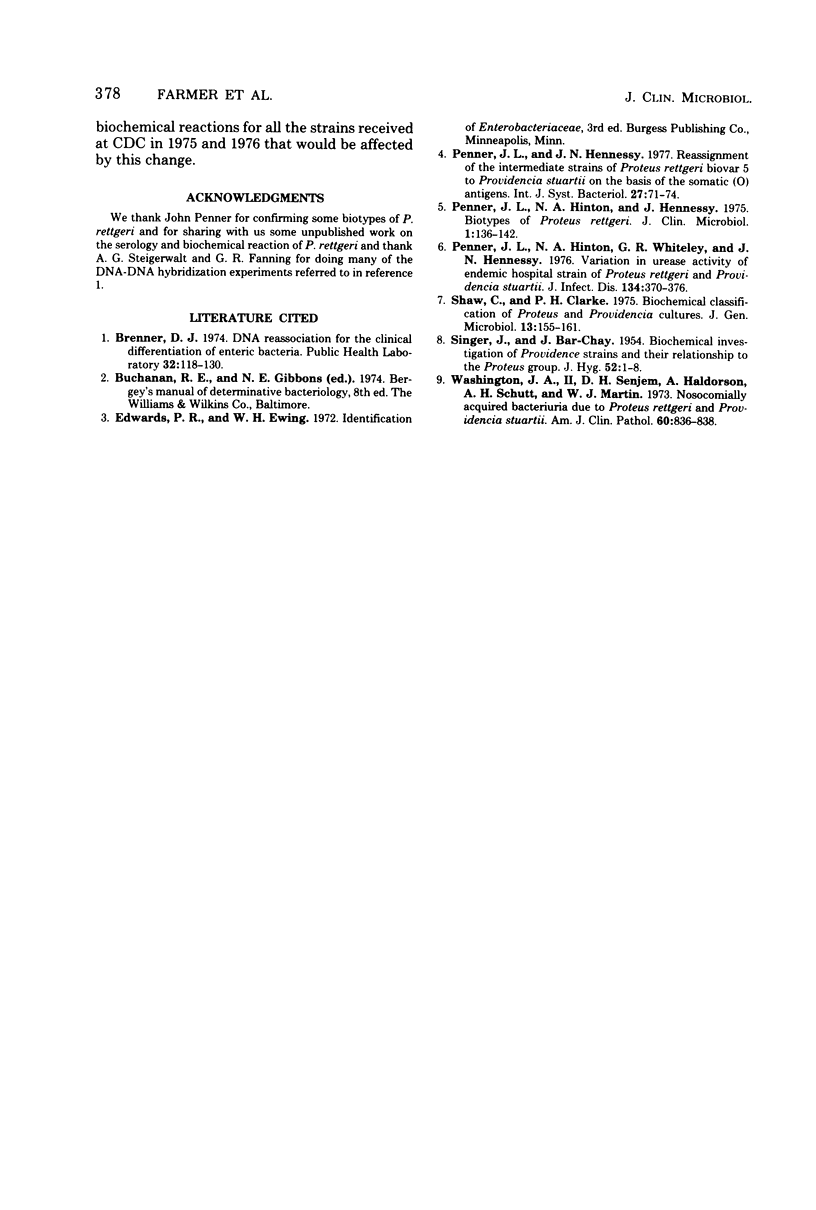
Selected References
These references are in PubMed. This may not be the complete list of references from this article.
- Penner J. L., Hinton N. A., Hennessy J. Biotypes of Proteus rettgeri. J Clin Microbiol. 1975 Feb;1(2):136–142. doi: 10.1128/jcm.1.2.136-142.1975. [DOI] [PMC free article] [PubMed] [Google Scholar]
- Penner J. L., Hinton N. A., Whiteley G. R., Hennessy J. N. Variation in urease activity of endemic hospital strains of Proteus rettgeri and Providencia stuartii. J Infect Dis. 1976 Oct;134(4):370–376. doi: 10.1093/infdis/134.4.370. [DOI] [PubMed] [Google Scholar]
- SHAW C., CLARKE P. H. Biochemical classification of Proteus and Providence cultures. J Gen Microbiol. 1955 Aug;13(1):155–161. doi: 10.1099/00221287-13-1-155. [DOI] [PubMed] [Google Scholar]
- SINGER J., BAR-CHAY J. Biochemical investigation of Providence strains and their relationship to the Proteus group. J Hyg (Lond) 1954 Mar;52(1):1–8. doi: 10.1017/s0022172400027194. [DOI] [PMC free article] [PubMed] [Google Scholar]
- Washington J. A., 2nd, Senjem D. H., Haldorson A., Schutt A. H., Martin W. J. Nosocomially acquired bacteriuria due to Proteus rettgeri and Providencia stuartii. Am J Clin Pathol. 1973 Dec;60(6):836–838. doi: 10.1093/ajcp/60.6.836. [DOI] [PubMed] [Google Scholar]


